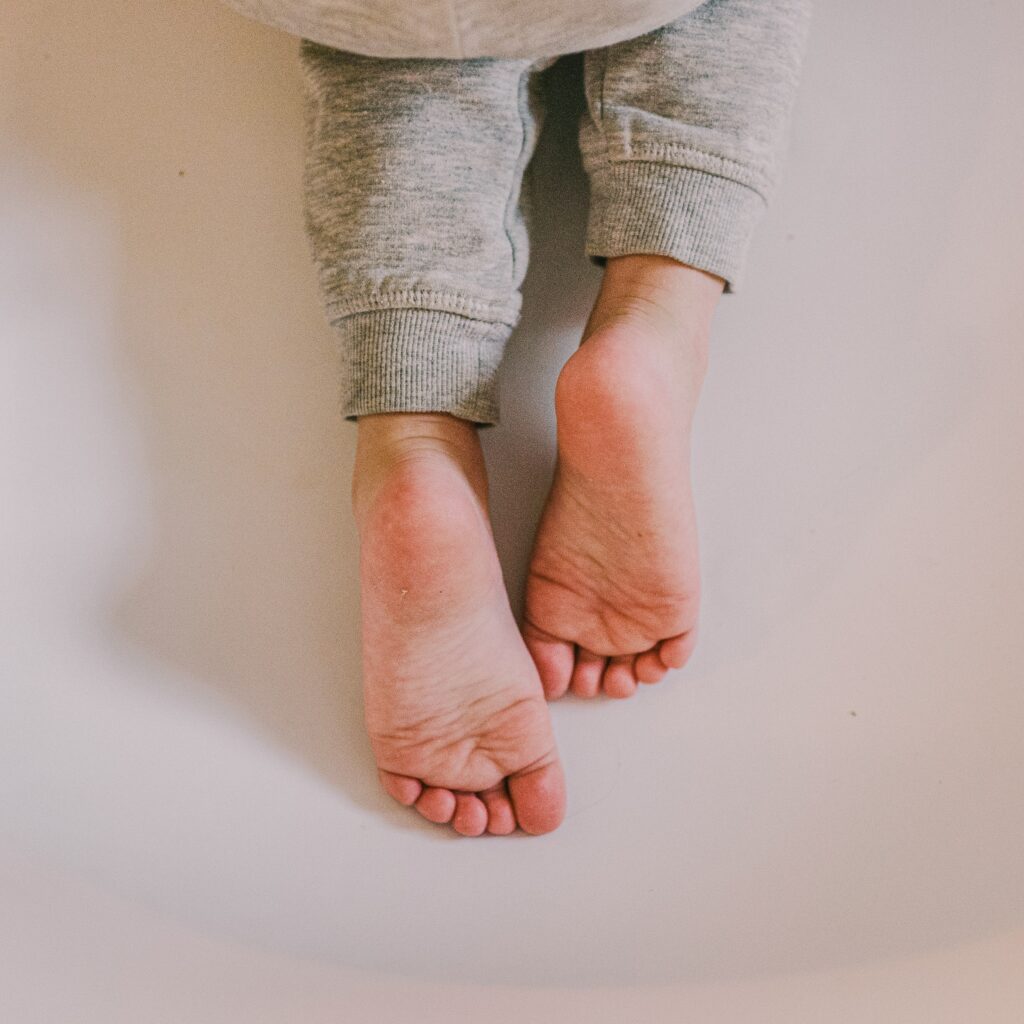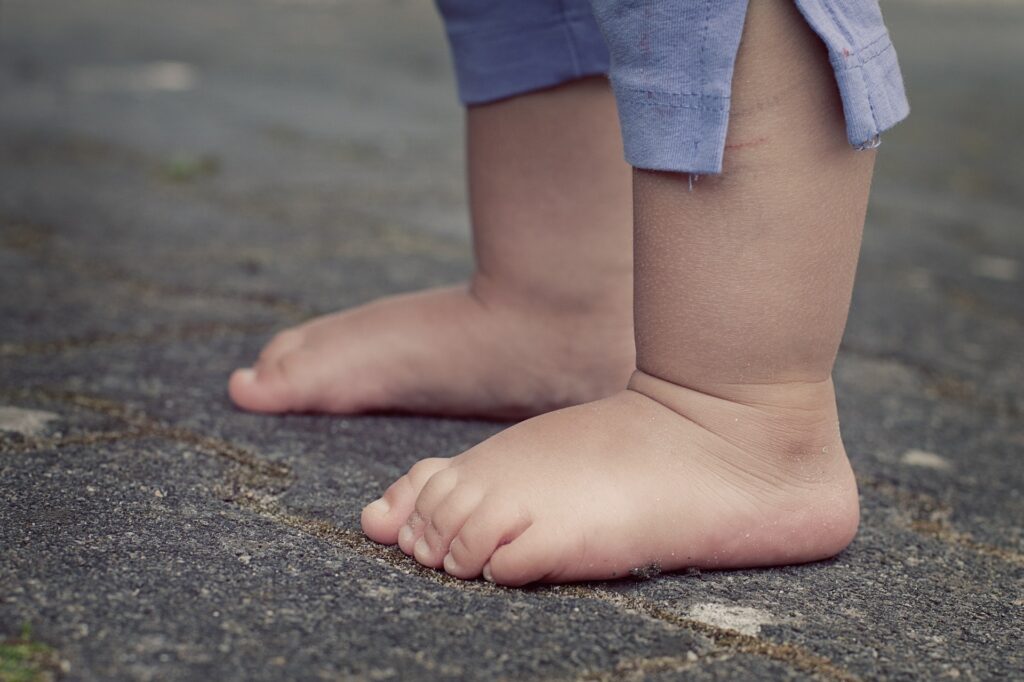兒童由出生開始,身體各個部份處於成長階段。腳部於不同時期亦會出現變,大概可分為6個時期。

** 以上提供之年齡範圍為矯形師多年經驗得出,各兒童的生長速度都不太相同,僅供參考。
出生期 (約0-6個月)

At Newborn, the baby's foot structure is not mature and there is no rigid bone structure. The cartilage tissue is unable to support the body weight.
The foot consists of 22 bones. They are wrapped around by the subcutaneous tissue and fat for protecting the incompletely developed foot bones.
The length of the five toes is similar and the arch has not yet developed in this stage.
爬行期 (約7-10個月)

嬰兒爬行需要抬高並左右轉動頭部,還需要肩膊及手腕的力量去支撐整個上半身,因此有利於強化BB的手、腳、頸部的關節發育,並使腹部、頸部、四肢的骨骼關節和小肌肉得到鍛鍊,促進骨骼生長,增強體力並為將來的動作打下基礎。
學行期 (約11-18個月)

The baby will try to stand after the baby get used to crawl as the mind, muscles and nerves mature. Then, they will have the first step of their life. Most babies will know how to walk at age 9-18 month.
由於幼童開始學習走路,下肢開始要適應承受身體重量,膝部在此階段會呈O形狀。
At the beginning of walking, the gait is mostly like a penguin. During walking, they will swing left and right which mean they are not stable.
Appropriate shoes for school should be designed so that the baby's feet can sense the floor during walking. The design should protect the feet while ensure that the shoes do not hinder them from learning to walk.
不建議家長為了讓子女更快學走路而購買學行車。1999年一份大學的研究指出,嬰兒經常使用學行車較沒有使用學行車的嬰兒,在體格及智力上較低。家長只要適當地輔助,鼓勵嬰兒自己努力嘗試,他們自然而然地自己走路
穩步期 (約19-36個月)

At this stage, walking will gradually stabilizes and the time for the feet to bear the weight of the body increases accordingly.
Young children have a thick layer of fat covering the arch of the foot, called the "fake flat feet". In addition, there will be more obvious hindfoot valgus and X-legs.
For the choice of footwear, it is recommended that the heel of the shoe should be rigid enough to control the heel. The material of the upper should also be highly breathable (for example, using microfiber, cowhide, etc.) to reduce the chance of fungal infection. Because the forefoot of the young child is more wide, the toe box of the shoe should be wide enough to allow movement between the toes.
腳形變化期 (約3-5歲)

At this stage, the fat layer at the bottom of the feet gradually absorbed and disappeared. The arch of the foot began to appear. At the same time, the angle of the hindfoot and the X-legs began to decrease.
此階段家長將察覺到小朋友在跑步時有時會不穩,其中一個原因是X形腿令膝關節內側互相碰撞而導致的。
For the insole, in addition to the appropriate arch curvature, also pay attention to the softness of the insole. In general, the arch support insole used for daily walking should be harder. The material of insole which is for sports is more elastic to provide good cushioning and shocking absorption.
In order to simulate the growth of child's bone structure, parents are advised to choose the shoes with rigid heel cup which will reduce the deviation angle of the hind foot and the X-leg.
<矯形師的小小建議> 小朋友的足部處於發育期,如有扁平足等腳形問題,除了穿著矯形鞋托/鞋墊外,亦鼓勵多做足部肌肉強化運動,刺激腳部/腳底小肌肉發育。家長們可以遊戲方式令小朋友願意並持續Exercise.
足部肌肉強化運動 – 彈跳及平衡,有助增強盆骨周邊肌肉及下肢力量
足部肌肉強化運動 – 踩踏不平面,有助鍛練平衡力,凹凸點可刺激腳底小肌肉成長


